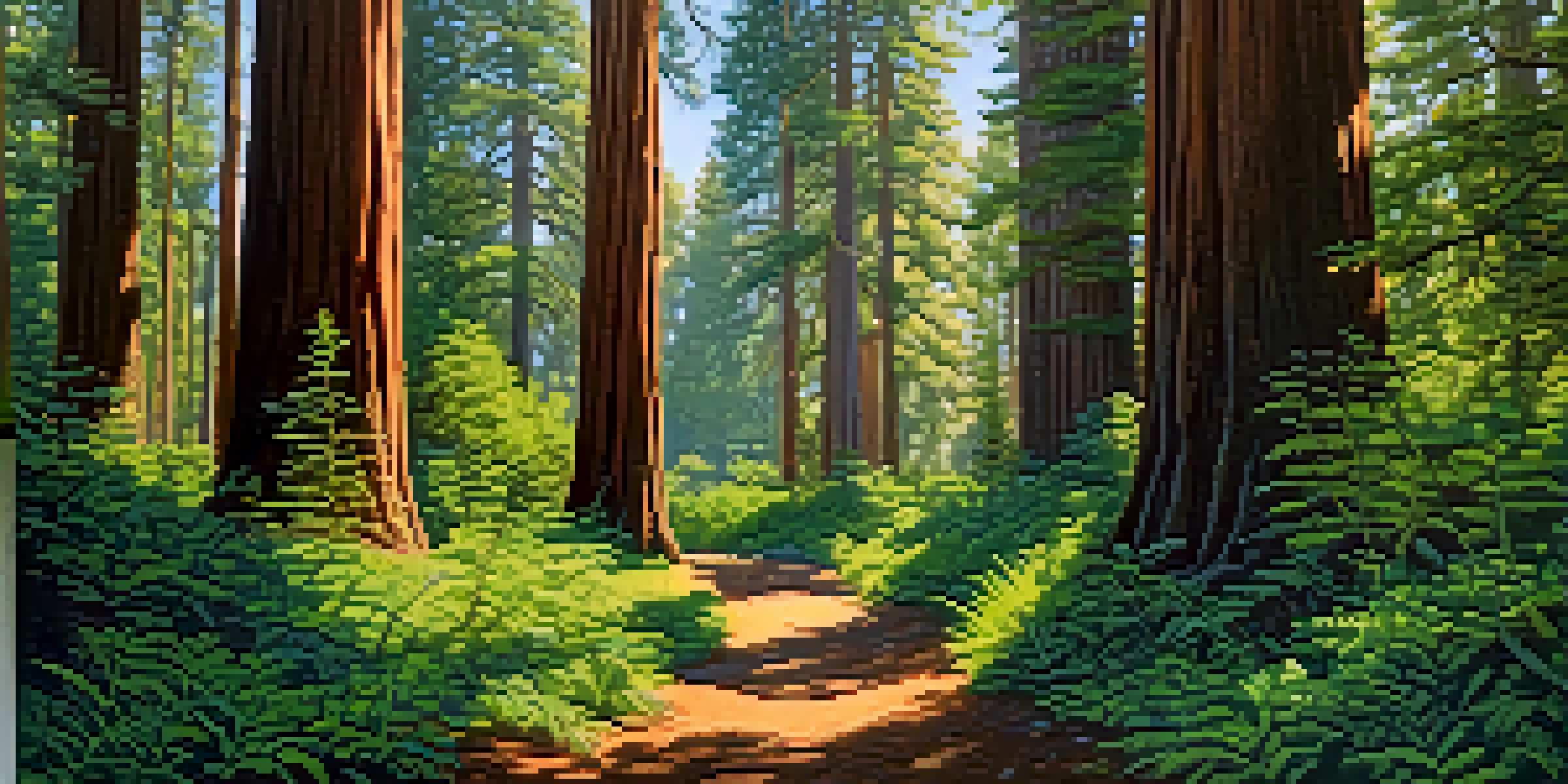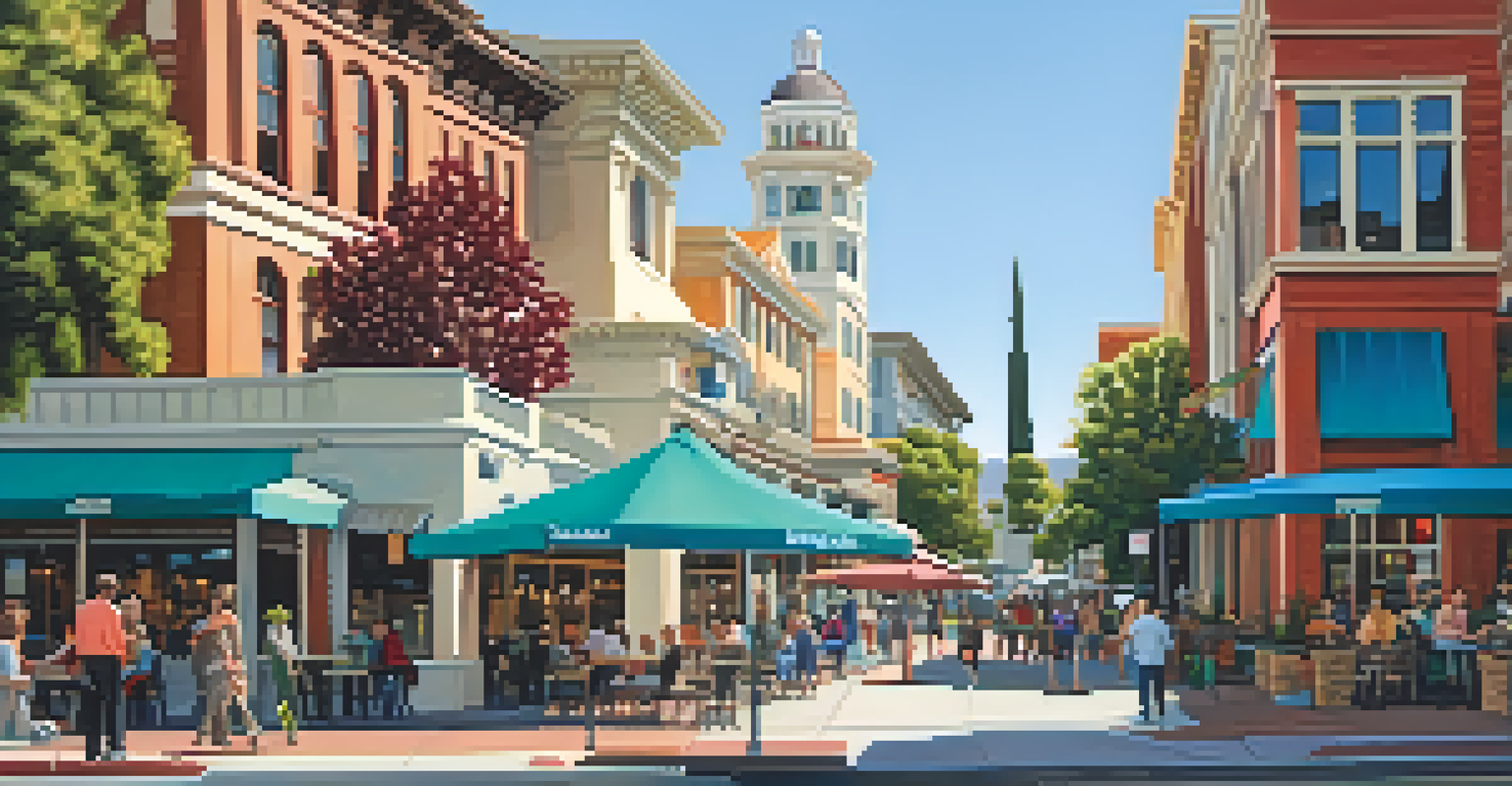The Founding of Redwood City: A Look at Its Origins

The Early Inhabitants of Redwood City
Long before Redwood City was founded, the area was inhabited by the Ohlone people, who thrived on the region's natural resources. Their deep connection to the land shaped the area's early culture and traditions. The Ohlone utilized the coastal and bay environments for fishing, gathering, and hunting, which laid the groundwork for a rich local ecosystem.
The history of a people is found in its songs.
With an abundant supply of fish, game, and edible plants, the Ohlone established sustainable lifestyles that endured for centuries. Their knowledge of the terrain and its resources was passed down through generations, showcasing a harmonious relationship with nature. This balance would be pivotal as European settlers began to arrive.
The arrival of Spanish explorers in the 18th century marked a significant shift for the Ohlone and the future of Redwood City. As colonizers sought to expand their territory, the indigenous communities faced challenges that would redefine their way of life forever.
Spanish Influence and Land Grants
In the early 1800s, Spanish colonization brought about land grants that transformed the landscape of present-day Redwood City. The Spanish crown awarded large parcels of land to settlers, which led to the establishment of ranchos. These ranchos were primarily used for cattle grazing, profoundly impacting the local economy and environment.

One notable land grant was Rancho de las Pulgas, which encompassed much of what we now know as Redwood City. This area became a hub for agriculture and livestock, further attracting settlers and shaping the region’s identity. The Spanish influence can still be seen in place names and cultural traditions that persist today.
Ohlone Heritage Shaped Redwood City
The Ohlone people's sustainable lifestyles and deep connection to the land laid the foundation for the area's early culture and traditions.
As the ranchos flourished, they laid the groundwork for the settlement patterns that would follow. The foundations of a burgeoning community began to take shape, setting the stage for the eventual establishment of Redwood City.
The Birth of Redwood City: Founding Years
Redwood City officially came into being in 1867 when it was incorporated as a city. This marked a significant milestone, as the area had been primarily a collection of small settlements until then. The decision to incorporate was driven by its strategic location along the San Francisco Peninsula and its potential for development.
Preservation of one's own culture does not require contempt or disrespect for other cultures.
The city's name pays homage to the majestic redwood trees that were abundant in the region, symbolizing strength and resilience. These towering trees not only inspired the city’s name but also served as a vital resource for the early economy, particularly in shipbuilding and construction.
With the establishment of the city, Redwood City began to attract more settlers, businesses, and industries. This influx of people and commerce was pivotal in shaping the community and driving its growth in the years to come.
The Role of the Railroad in Redwood City's Growth
The arrival of the railroad in the late 19th century was a game-changer for Redwood City. The Southern Pacific Railroad established a line that connected the city to San Francisco, significantly enhancing its accessibility. This development not only encouraged population growth but also spurred economic expansion.
With easier access to transportation, Redwood City became a bustling hub for trade and commerce. Businesses flourished as goods could be shipped and received more efficiently, attracting entrepreneurs and workers alike. The city’s economy diversified, moving beyond agriculture to include manufacturing and services.
Railroad Boosted Economic Growth
The arrival of the Southern Pacific Railroad in the late 19th century transformed Redwood City into a bustling hub for trade and commerce.
The railroad also fostered a sense of community among residents, as it brought people together and facilitated social interactions. This newfound connectivity played a crucial role in establishing Redwood City’s identity as a vibrant and thriving community.
Cultural Developments and Community Building
As Redwood City continued to grow, so did its cultural landscape. The late 19th and early 20th centuries saw the establishment of various community organizations, schools, and churches that contributed to a strong sense of belonging. These institutions became the backbone of the community, fostering connections among residents.
Cultural events and celebrations emerged as a way for residents to come together, sharing traditions and values that enriched the community. Festivals, parades, and public gatherings not only provided entertainment but also strengthened relationships among diverse groups of people.
This cultural flourishing laid the groundwork for the inclusive and vibrant community Redwood City is known for today. The city's rich tapestry of history and culture continues to be celebrated and preserved by its residents.
Challenges and Resilience Through the Years
Like many towns, Redwood City faced its share of challenges throughout its history. The Great Depression, for example, brought economic hardship that tested the resilience of the community. Many residents struggled to make ends meet, but the spirit of cooperation and mutual support allowed the city to navigate these turbulent times.
In the post-war era, Redwood City experienced significant growth and transformation. The influx of new residents and industries brought both opportunities and challenges, as the city worked to accommodate rapid development while preserving its unique character. This balancing act remains a key focus for city planners and leaders.
Resilience Amidst Challenges
Redwood City's community spirit and adaptability have allowed it to thrive through economic hardships and rapid development over the years.
Through the ups and downs, the community's resilience has been a defining trait of Redwood City's identity. Its ability to adapt and thrive in the face of adversity has shaped the city into the vibrant and dynamic place it is today.
Redwood City Today: A Blend of History and Modernity
Today, Redwood City stands as a testament to its rich history while embracing modernity. The blend of historic buildings and contemporary developments creates a unique landscape that reflects both the past and the present. Residents take pride in their city's heritage, which is evident in the preservation efforts seen throughout the community.
The city has also become a hub for technology and innovation, attracting businesses and talent from around the world. This economic growth has revitalized the area, creating opportunities for residents while maintaining the charm that has long characterized Redwood City.

As Redwood City continues to evolve, its commitment to honoring its origins remains a priority. The community's dedication to preserving its history while welcoming new ideas and opportunities ensures that Redwood City will thrive for generations to come.